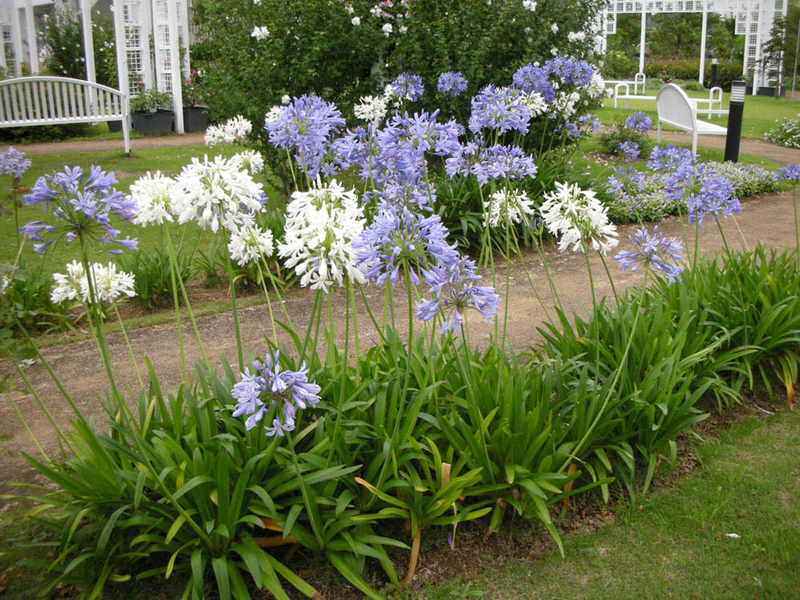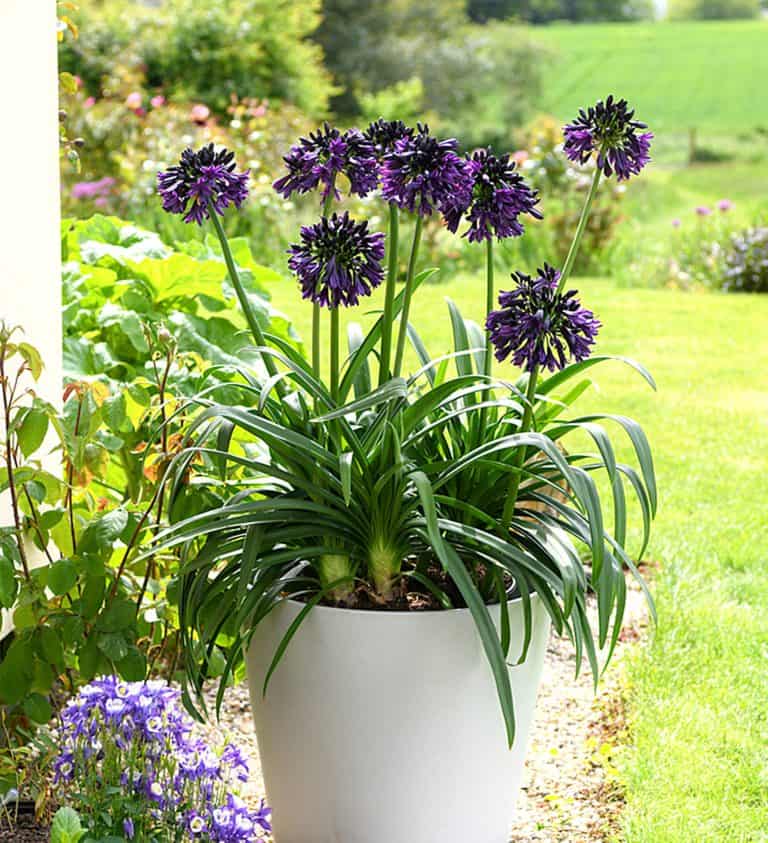Sensational Agapanthus: Enhancing Your Garden's Charm
Sensational Agapanthus: Enhancing Your Garden's Charm
Blog Article
Letting Loose the Secret to Successful Agapanthus Farming: Idea for a Flourishing Garden
In the world of horticulture, cultivating agapanthus successfully calls for a calculated strategy that incorporates numerous facets of plant treatment. With cautious attention to detail, one can unlock the keys to supporting these sensational blooms, causing a garden that thrives with beauty and vibrancy. By recognizing the nuances of agapanthus farming, one can create a setting where these plants thrive and flower abundantly. In the complying with discussion, we will check out essential ideas and methods that will assist you towards a flourishing agapanthus yard, supplying insights right into ideal practices, soil conditions, sprinkling strategies, and extra.
Planting Agapanthus: Best Practices
When planting Agapanthus, appropriate dirt prep work is essential for making sure effective development and growth of these attractive flowers. Agapanthus, commonly referred to as Lily of the Nile or African lily, flourishes in well-draining dirt with a somewhat acidic to neutral pH degree - Agapanthus. Prior to growing, it is essential to change heavy clay soils with natural matter such as compost or peat moss to enhance drain and provide vital nutrients for the plants
To plant Agapanthus, select a location that receives full sunlight to partial shade, as this will advertise healthy development and plentiful blooming. Dig a hole twice the diameter of the plant's root round and position the Agapanthus at the very same deepness it was formerly expanding. Delicately backfill the opening with soil, pushing down strongly to eliminate any kind of air pockets around the origins.
Water the recently planted Agapanthus thoroughly and proceed to maintain the dirt equally damp, particularly throughout the plant's energetic growing period. Agapanthus. Applying a balanced plant food once a month can additionally sustain the plant's development and blooming. By complying with these best techniques for growing Agapanthus, you can create a stunning display of these fascinating flowers in your yard
Suitable Soil Issues for Agapanthus
For ideal growth and blooming success of Agapanthus plants, guaranteeing the soil problems are suitable is important. Agapanthus thrives in well-draining dirt with a slightly acidic to neutral pH level varying from 6.0 to 7.0. This type of dirt permits ample water drain, avoiding waterlogging which can lead to root rot. To boost soil drain, consider including raw material such as compost or peat moss when preparing the growing site. Additionally, Agapanthus chooses soil that is abundant in nutrients, so integrating a well balanced fertilizer throughout the growing period can promote healthy and balanced growth and lively blooms.

Watering and Feeding Tips
To make certain healthy and balanced development and vivid flowers, appropriate watering and feeding strategies are necessary for effective Agapanthus growing. Agapanthus plants benefit from normal watering, specifically throughout the expanding season.
When it pertains to fertilizing Agapanthus, check this a balanced plant food with equivalent parts nitrogen, phosphorus, and potassium can be applied in the spring to advertise healthy development and flowering. Slow-release fertilizers are excellent for giving nutrients slowly over an extended duration. Avoid over-fertilizing, as this can bring about too much foliage development at the cost of blossoms.
Furthermore, incorporating raw material like garden compost into the dirt can improve nutrient levels and enhance soil framework, helping in the total health of the Agapanthus plants. By adhering to these watering and fertilizing ideas, gardeners can guarantee their Agapanthus plants thrive and create stunning screens of flowers.
Pruning and Deadheading Strategies
Appropriate trimming and deadheading strategies play a vital function in maintaining the health and wellness and visual appeals of Agapanthus plants, enhancing the necessary practices of watering and feeding for effective farming. Pruning Agapanthus includes getting rid of spent flower heads, yellowing or dead fallen leaves, and total shaping of the plant to promote better growth. Deadheading, the process of removing faded blossoms, not just boosts the plant's look but likewise motivates further flowering.
When deadheading Agapanthus, it is suggested to snip off the blossom stem at the base making use of sharp, clean shears. This process redirects the plant's energy from seed production back into root and vegetation development, promoting a much healthier and extra robust plant. Regular deadheading can prolong the growing duration of Agapanthus and protect against self-seeding, which can lead to overcrowding.
In regards to trimming, Agapanthus generally take advantage of a light trim after blossoming to clean up the plant and urge fresh growth. Cutting down the spent blossom stems and removing any kind of dead or broken foliage helps preserve the plant's vitality and general look. Nonetheless, it is important to avoid cutting right into the crown of the plant, as this can damage its wellness.

Protecting Agapanthus From Pests and Diseases
Executing efficient parasite and illness management strategies is click for more info vital to securing the wellness and vigor of Agapanthus plants in growing. Agapanthus are normally sturdy plants, but they can still drop sufferer to various parasites and conditions otherwise appropriately taken care of. One typical insect that affects Agapanthus is the Agapanthus borer, a caterpillar that passages into the plant, creating damages to the fallen leaves and blossoms. To stop invasions, normal evaluation of the plants is vital. If borers are spotted, they can be manually gotten rid of, or insecticidal soap can be utilized as a control action.
Along with pests, Agapanthus are susceptible to diseases such as origin rot and fungal fallen leave spots. These issues can usually be prevented by guaranteeing appropriate drain and staying clear of overwatering. Affected components of the plant must be without delay my review here removed to protect against more spread if signs of disease appear. Fungicides may also be utilized as a treatment action, following the supplier's instructions very carefully. By staying watchful and addressing pest and disease problems immediately, garden enthusiasts can aid their Agapanthus grow and prosper.

Conclusion
To conclude, successful farming of agapanthus calls for correct growing techniques, perfect soil conditions, sufficient watering and fertilizing, normal pruning and deadheading, and defense from pests and diseases. By adhering to these methods and tips, gardeners can ensure a growing yard full of gorgeous agapanthus blossoms. Agapanthus. Remember to keep constant care and interest to information to promote the health and wellness and durability of these sensational plants
When planting Agapanthus, proper dirt prep work is necessary for making sure successful development and development of these stunning blossoms.Water the freshly planted Agapanthus completely and proceed to maintain the soil uniformly damp, specifically throughout the plant's energetic expanding period.For ideal development and blooming success of Agapanthus plants, guaranteeing the dirt conditions are ideal is important. When growing or hair transplanting Agapanthus, make certain the soil is well-prepared to provide the essential foundation for the plants to develop themselves efficiently. One common insect that affects Agapanthus is the Agapanthus borer, a caterpillar that passages right into the plant, creating damages to the flowers and fallen leaves.
Report this page